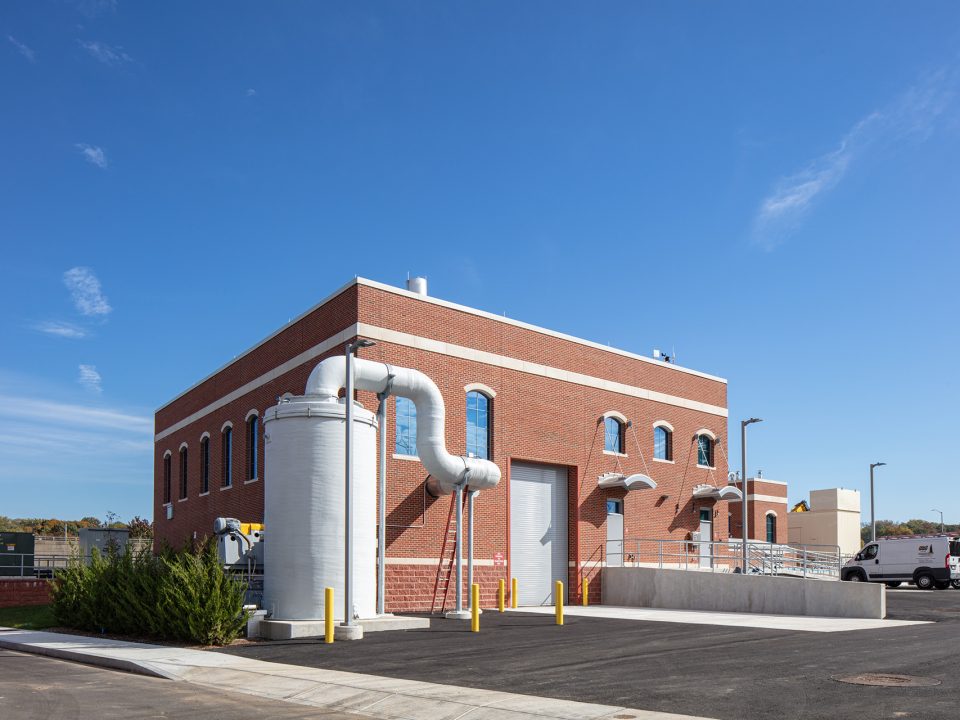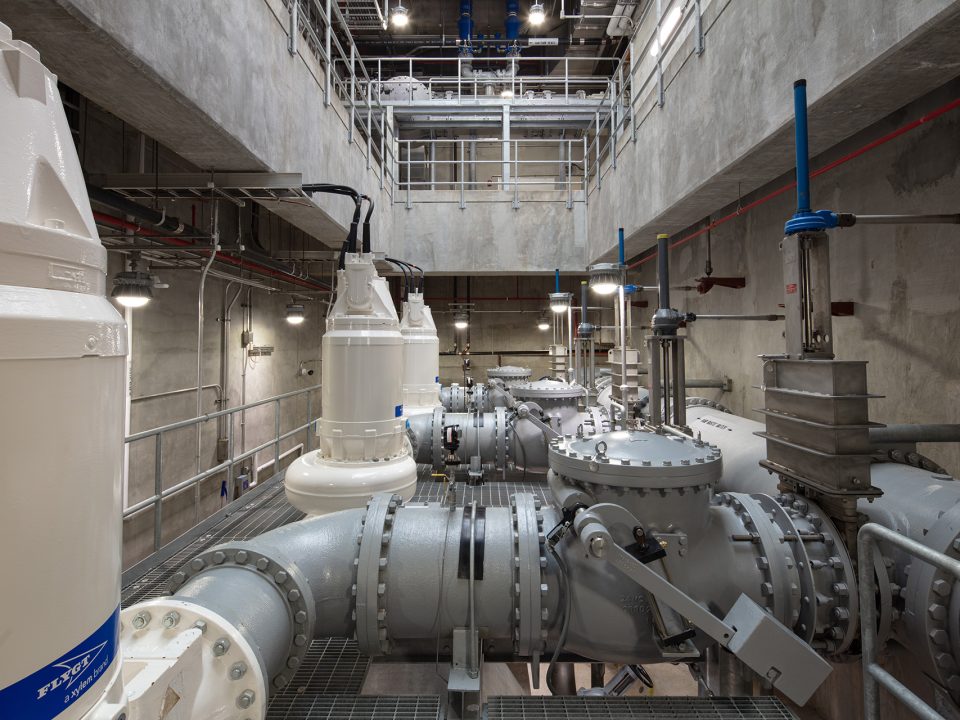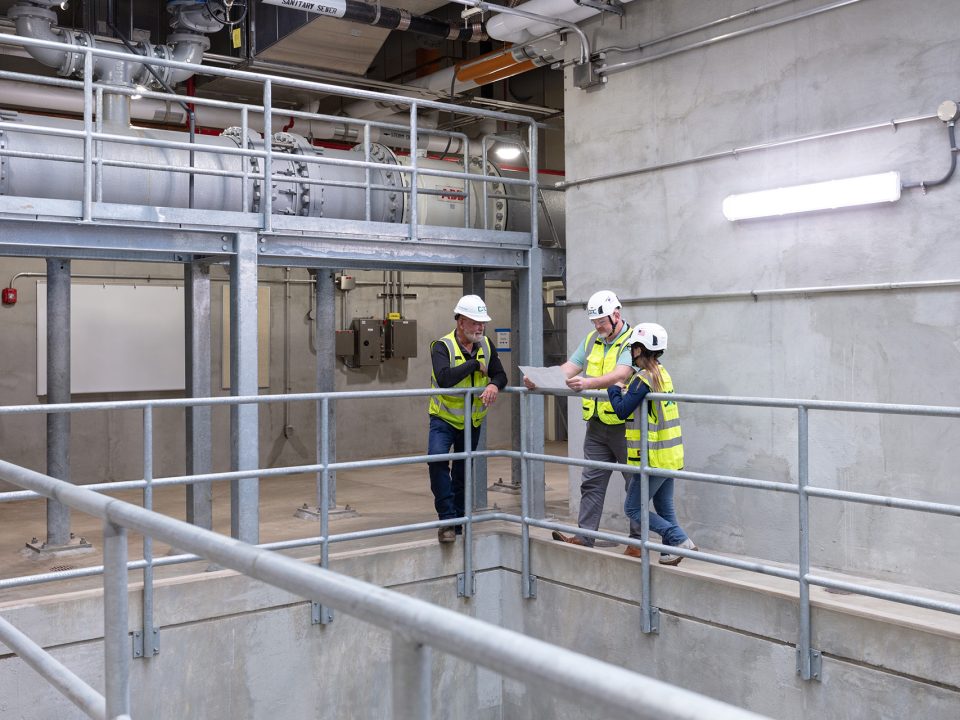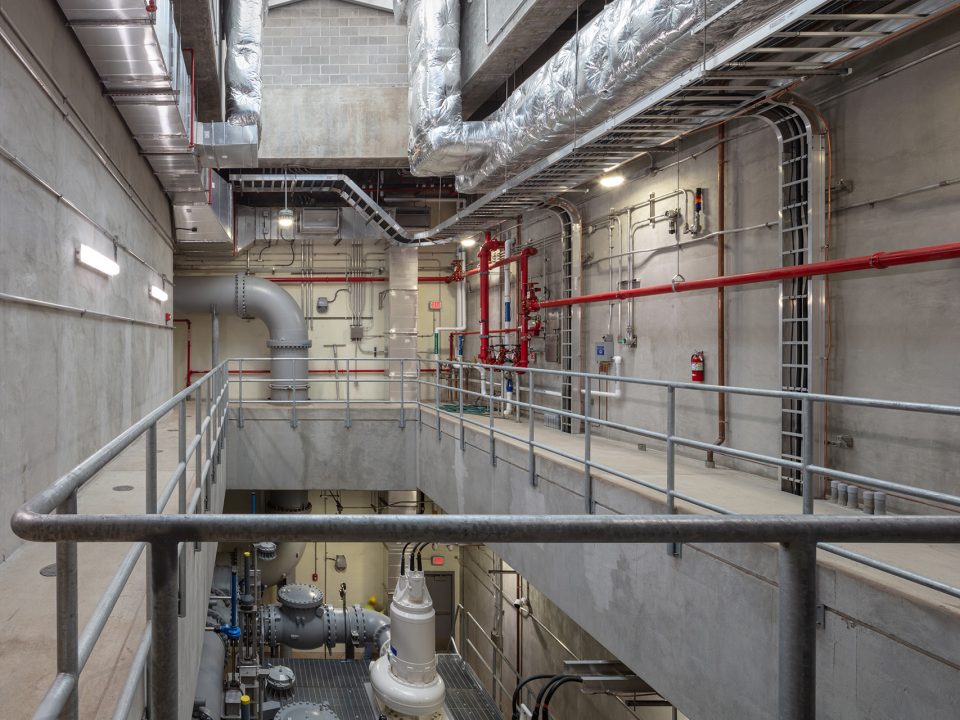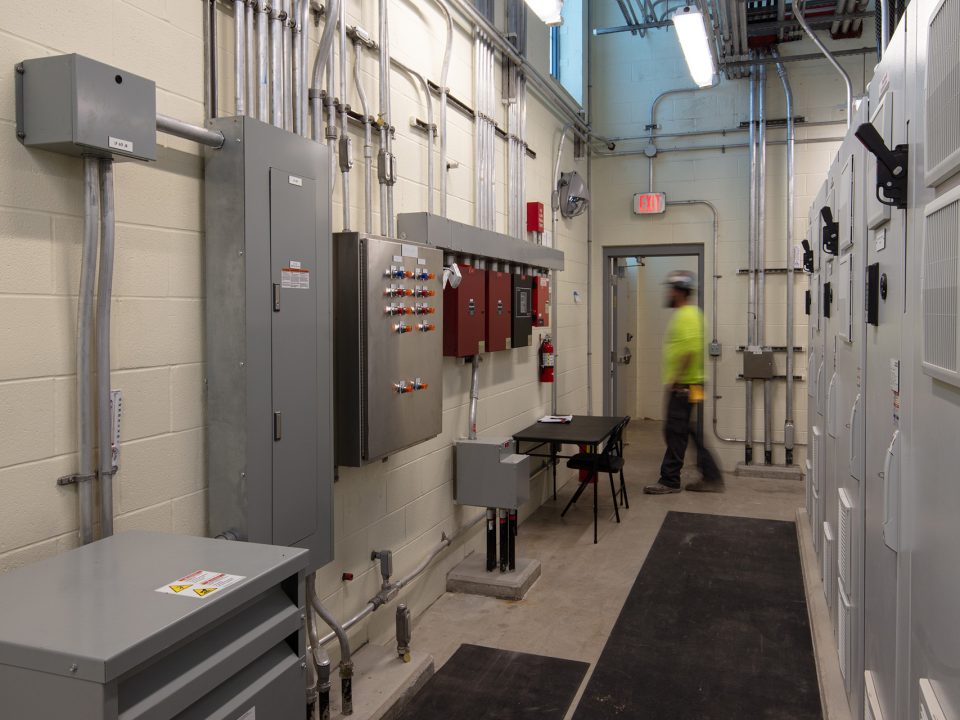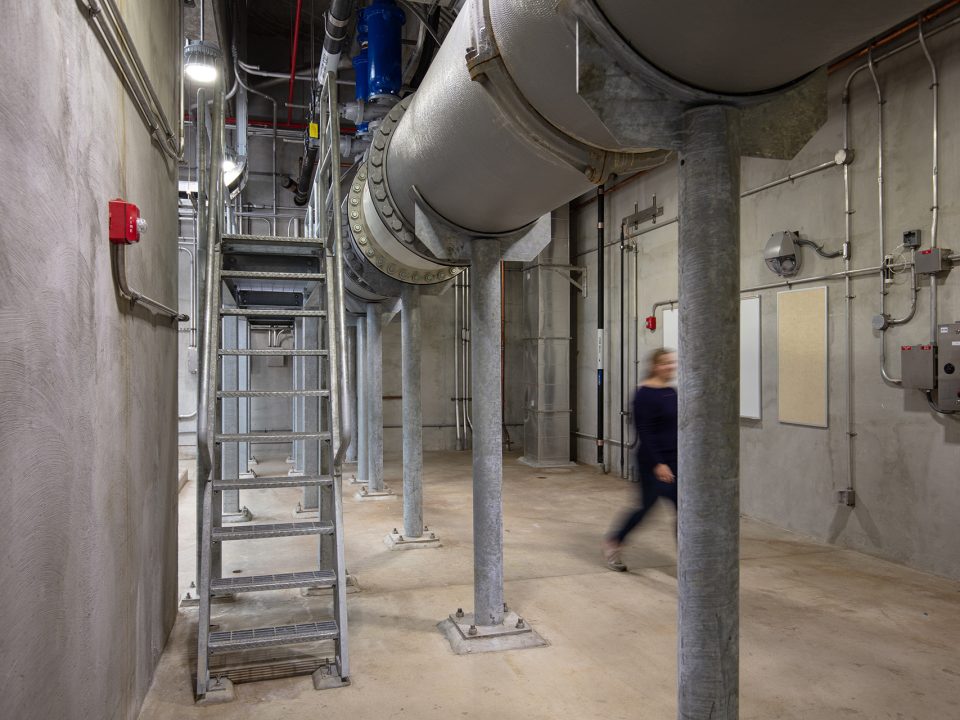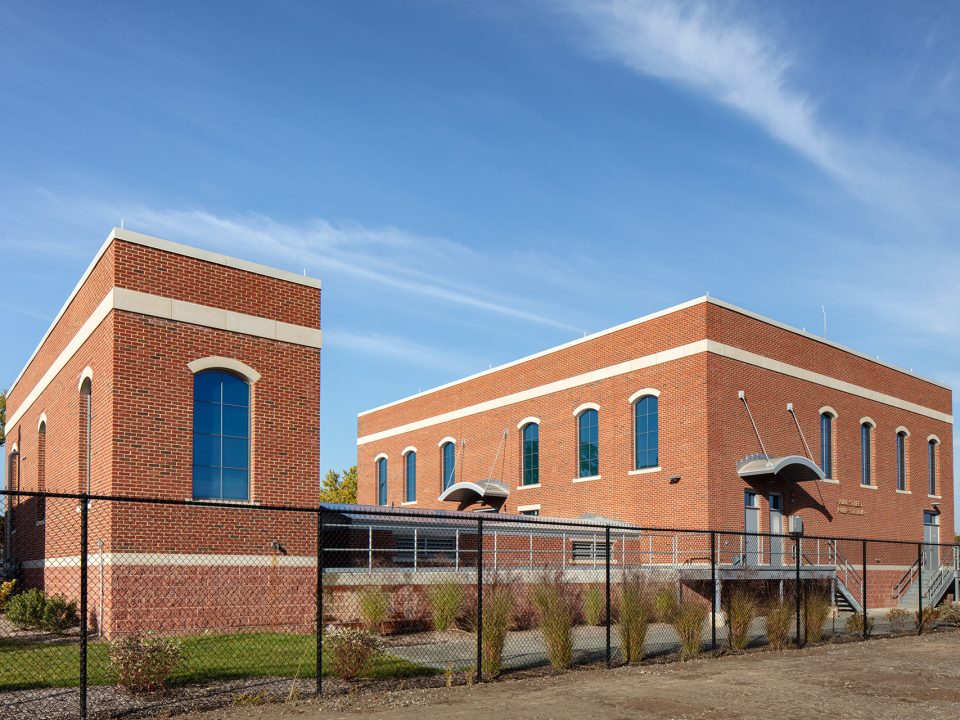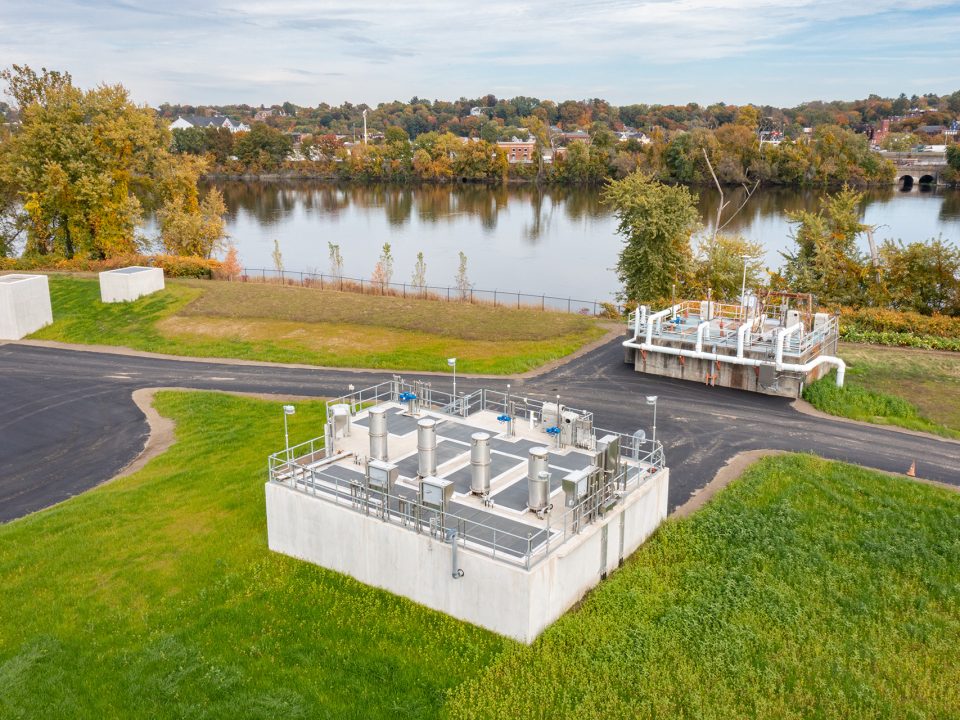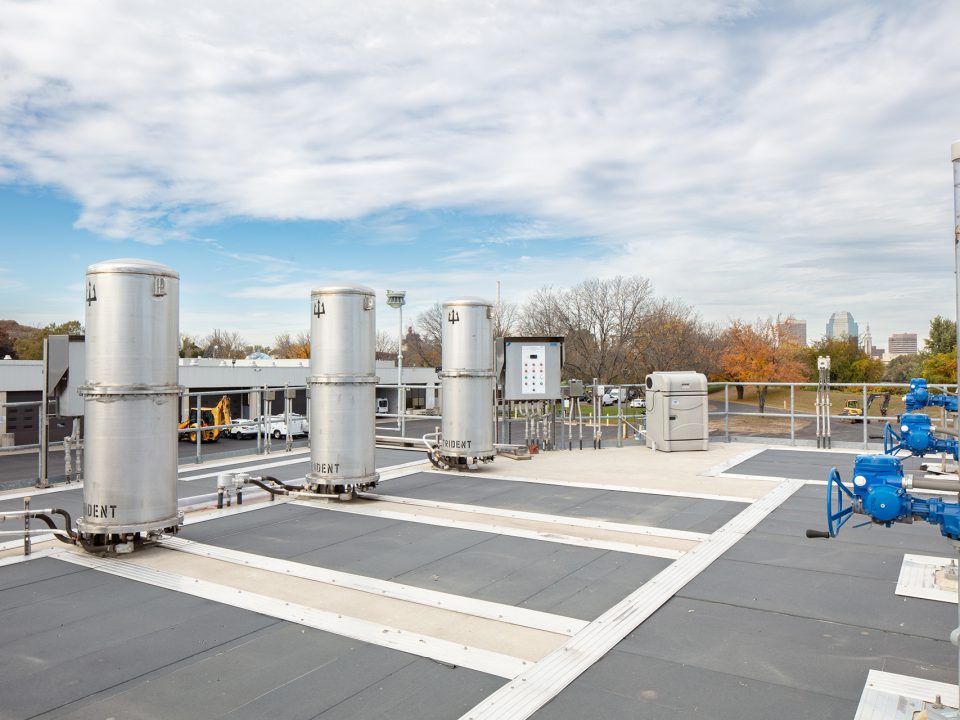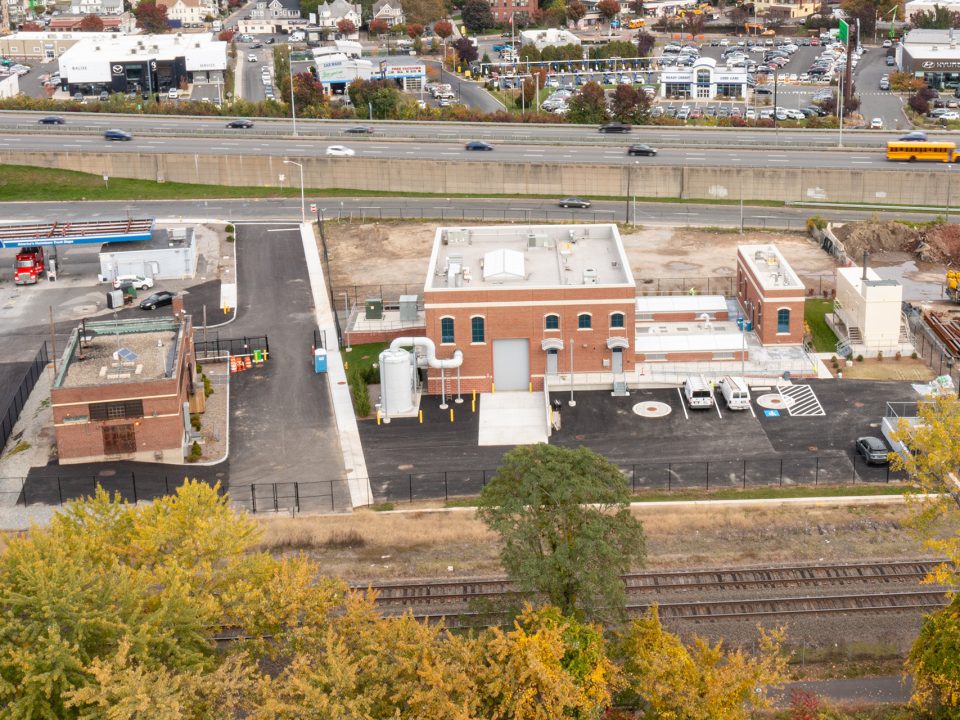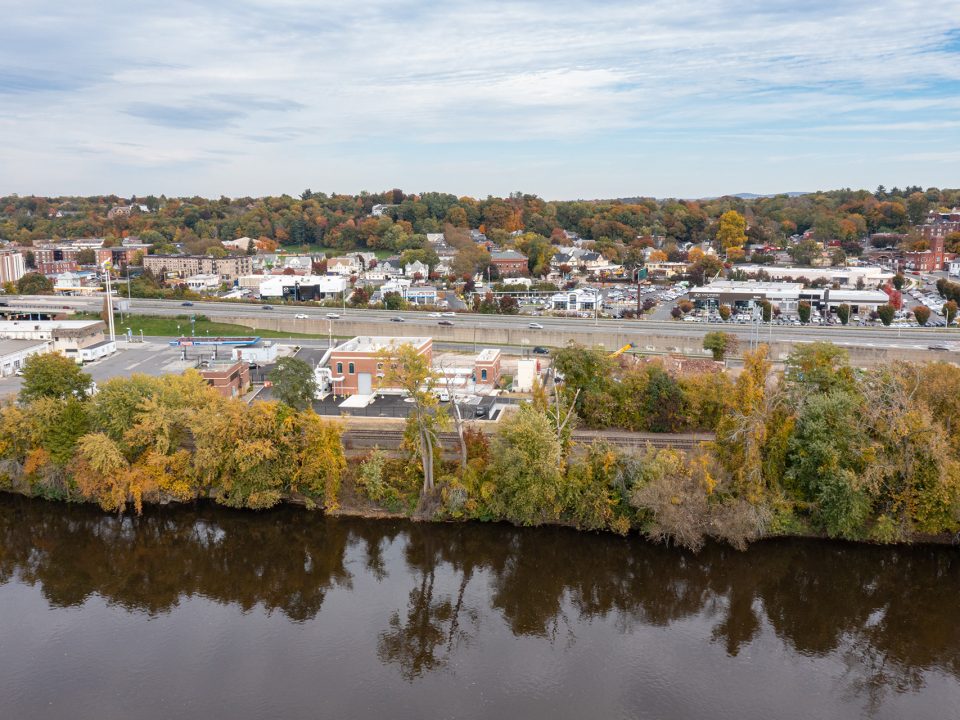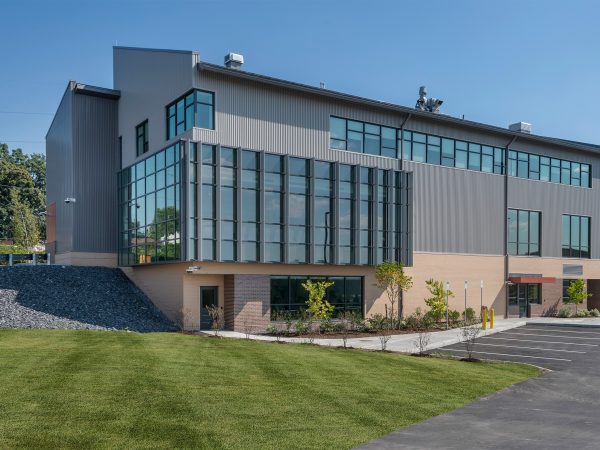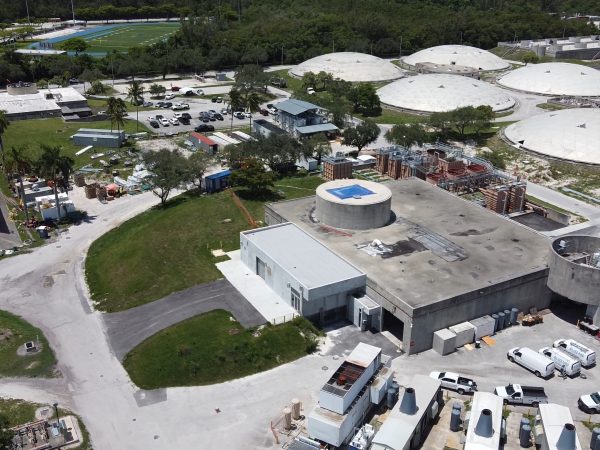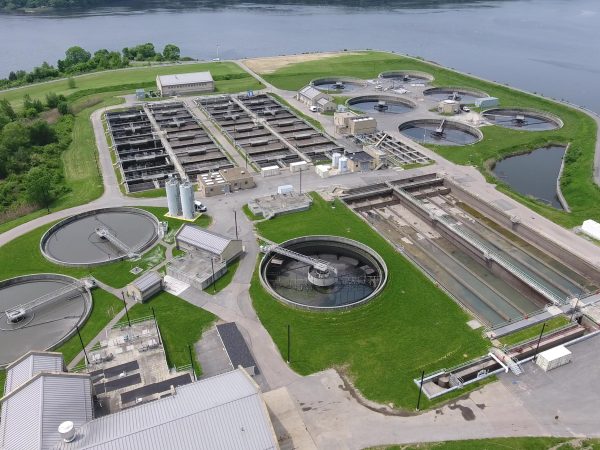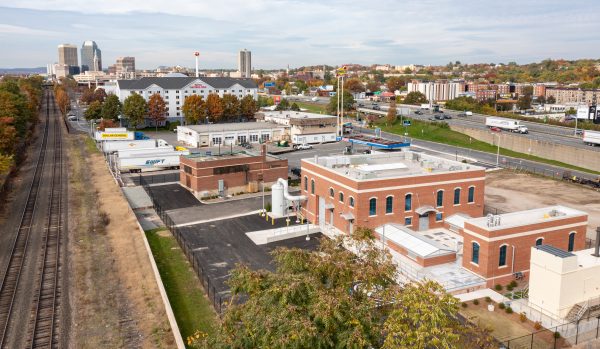


Revolutionizing Wastewater Infrastructure: Project Bolsters Resilience and Economic Growth, Innovating Pipe Crossings, Treatment Facilities, and Climate Adaptation for a Thriving Region
This $106 million project, once completed, will serve 70 percent of this region’s population. The goal is to upgrade the city’s wastewater infrastructure and increase capacity to accommodate economic growth and impacts of climate change.
The project’s scope of work includes new pipe crossings of the Connecticut River, construction of a new Springfield Regional Wastewater Treatment Facility (SRWTF) Influent Structure on Bondi’s Island, and a new sanitary pump station and screening facility on York Street.
The York Street Project is being built on the former site of the York Street jail, and will connect to the SRWTF on Bondi’s Island through three new 1,200-foot river crossing pipes. The installation was achieved through micro-tunneling of 3 combined sewer pipelines across the active rail lines between the project site and Connecticut River.
The pipelines consist of a 72″ prestressed concrete cylinder pipe, within a 96″ diameter reinforced concrete casing along with two 36″ HDPE force mains each within a 48″ steel casing.
Project Highlights
- Being delivered Public CM-at-Risk with GMP (Chp. 149-A).
- The work is being done next to an active rail line.
- The new plant is designed to pump 62 MGD (million gallons per day).
- This system will reduce combined sewage overflows by an estimated 100 million gallons per year with 100 fewer discharge events.
- The pump station excavation extends 50’ below grade and 35’ below the groundwater table through overburden consisting primarily of silty clay. The proximity to the railroad and an US Army Corp. Flood Damage Reduction System Flood wall demanded a support of excavation system that would be rigid enough to limit deflection and watertight enough to prevent groundwater infiltration that could lead to settlement. A slurry wall support of excavation system was selected as it’s commonly used in clay soils in urban settings around existing structures due to the rigidity and water cutoff that is provided when the walls are extended into the underlying rock. In this instance, the project was also able to realize a time savings based on the speed in which this system can be constructed.
Services

Project Contact
-
Jeffrey Weinman
Project Executive - Contact Jeffrey Weinman
